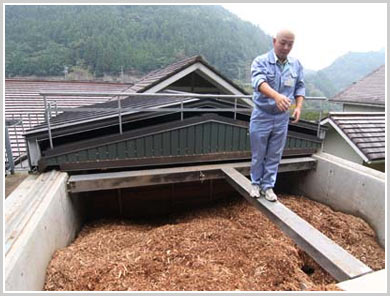Potential of urban forestry
The rate of population growth and urbanization out of control in developing countries has been causing many environmental and social consequences. The role of urban green trees is less focused, the technical process is too sketchy, the management policy is not synchronized . Therefore, the development of urban forestry will provide residents with the benefits of Environment and material are very important.
The fact that urban forestry has proven to bring many benefits to residents, as follows:
1. Material benefits
Currently, the demand for wood in civil construction, other architectural works, interior and exterior decoration and furniture is very large. The supply of timber from natural forests is getting less and less, so the first step is to plan and rate the square meter / tree per capita, the green belts between the industrial zone and the residential area, the middle of the highway and residential areas . If science and technology is used to breed, to introduce high-yield and suitable plants to soil, it will create a plentiful source of wood for the population.
Urban forestry also provides an abundant source of fuel. The majority of the poor live on the outskirts of the city using small branches as fuel. Households with small and manual production of traditional craft such as making rice paper, processing foods from cereals . use firewood.

A shredded wooden vault used to operate a water heater for a motel and hundreds of surrounding households in the city of Kamakatsu - a model forestry town in Japan - (Photo: HT)
2. Environmental benefits
With diversity and abundance in shape, foliage, color, height, flowering period . trees can increase living environment by reducing the glare of light, helping cool air softer, more fresh. Besides, many green trees also help reduce noise. The leaves are capable of absorbing or splitting sound waves, reducing the speed and intensity of sound waves.
Today, green trees become an indispensable element in architectural works, increasing real estate value and being the pride of urban residents. Ulrich's experiment in 1984 showed that 23 patients in the room had windows overlooking the green garden to recover faster than 23 patients in the window room did not look out at the green garden. Through this experiment, hospitals should plant more trees around for patients to see.
Trees are an indispensable component in cultural life, parks, amusement parks . as a bridge between nature and culture. Trees in urban environments create different cultures among ethnic groups and cities. For example, when it comes to Hai Phong, people immediately think of red phoenix flowers.
3. Educational value
Botanical gardens, parks, recreation areas . collecting many species of plants in the country and abroad, is a source of living plants for education. The natural forests around urban areas in Vietnam are now gradually losing, the nature conservation areas are too far away, the protection forests are not diverse .
4. Places of entertainment
Park Zoo, Dam Sen Cultural Park, Tao Dan Park . are places for entertainment, exercise not only for the city people. However, it is still too few for a densely populated urban area like Ho Chi Minh City.
Nguyen Son Thuy (Ho Chi Minh City Forestry Department)
- Growing vegetables in urban areas with vertical hanging gardens
- The solution helps Barcelona become the world's most quality transport city
- I-House - a green, sustainable urban development initiative
- Close up of the first urban railway train in Hanoi
- Ecological houses in urban areas do not waste land
- Promoting human potential to reveal many mysteries
- The risk of disease lurking in the urban population
- Urban self-sufficiency model with 100% food and energy
- What is the difference between the urban railway in Hanoi and Saigon?
- Birds know how to deal with urban noise pollution
- More than 80% of urban residents are breathing polluted air
- Students make fertilizer machines
 Is the magnetic North Pole shift dangerous to humanity?
Is the magnetic North Pole shift dangerous to humanity? Washington legalizes the recycling of human bodies into fertilizer
Washington legalizes the recycling of human bodies into fertilizer Lightning stone - the mysterious guest
Lightning stone - the mysterious guest Stunned by the mysterious sunset, strange appearance
Stunned by the mysterious sunset, strange appearance Skyscrapers can absorb 1,000 tons of CO2 per year
Skyscrapers can absorb 1,000 tons of CO2 per year  White flower clover - Wild plant or evolutionary mystery?
White flower clover - Wild plant or evolutionary mystery?  Safe and sustainable agricultural models of the future
Safe and sustainable agricultural models of the future  Urban 'ants' suffer better heat
Urban 'ants' suffer better heat  Rural birds find it difficult to
Rural birds find it difficult to  Urban 'swallowed' 20,000 football fields every day
Urban 'swallowed' 20,000 football fields every day 